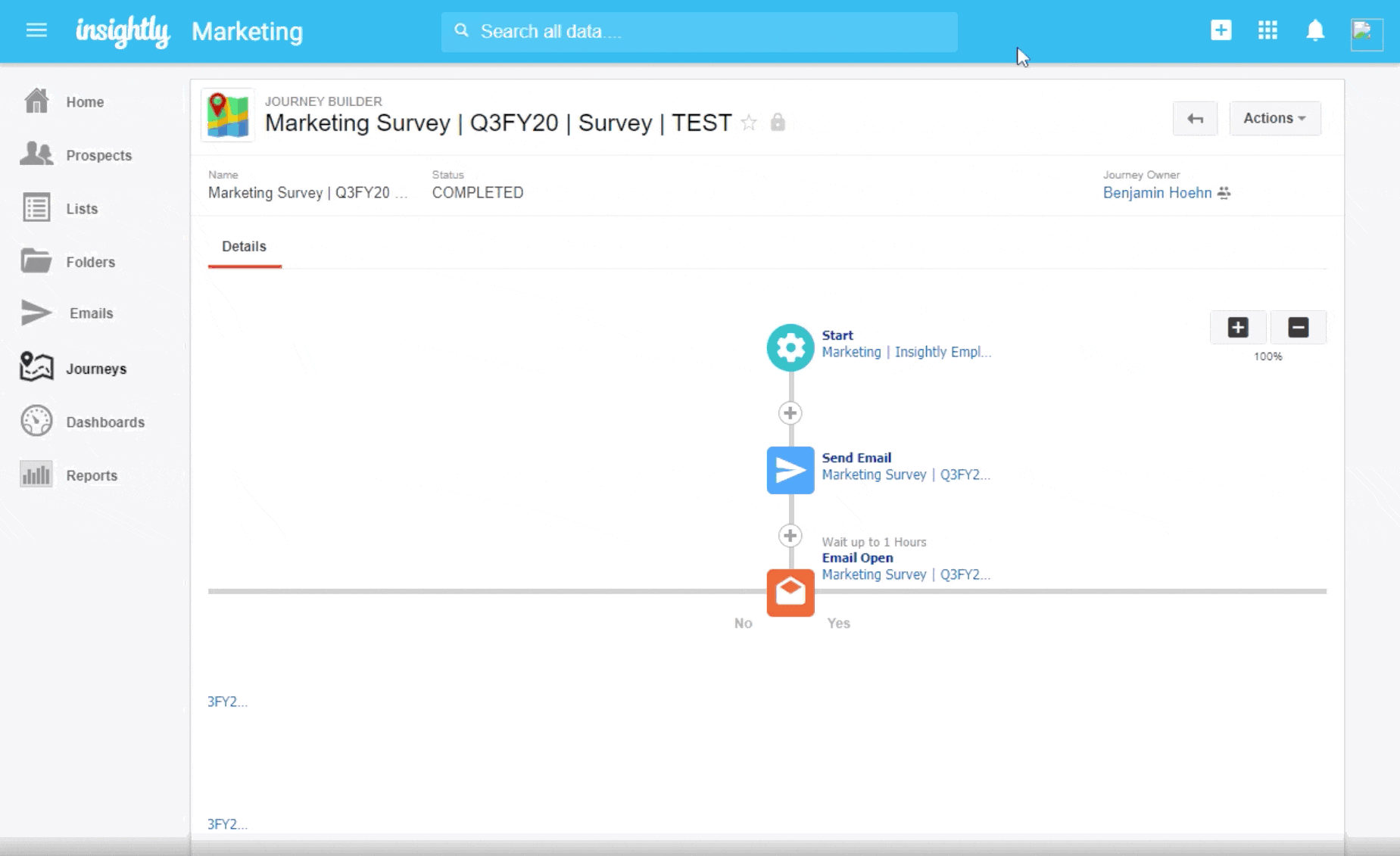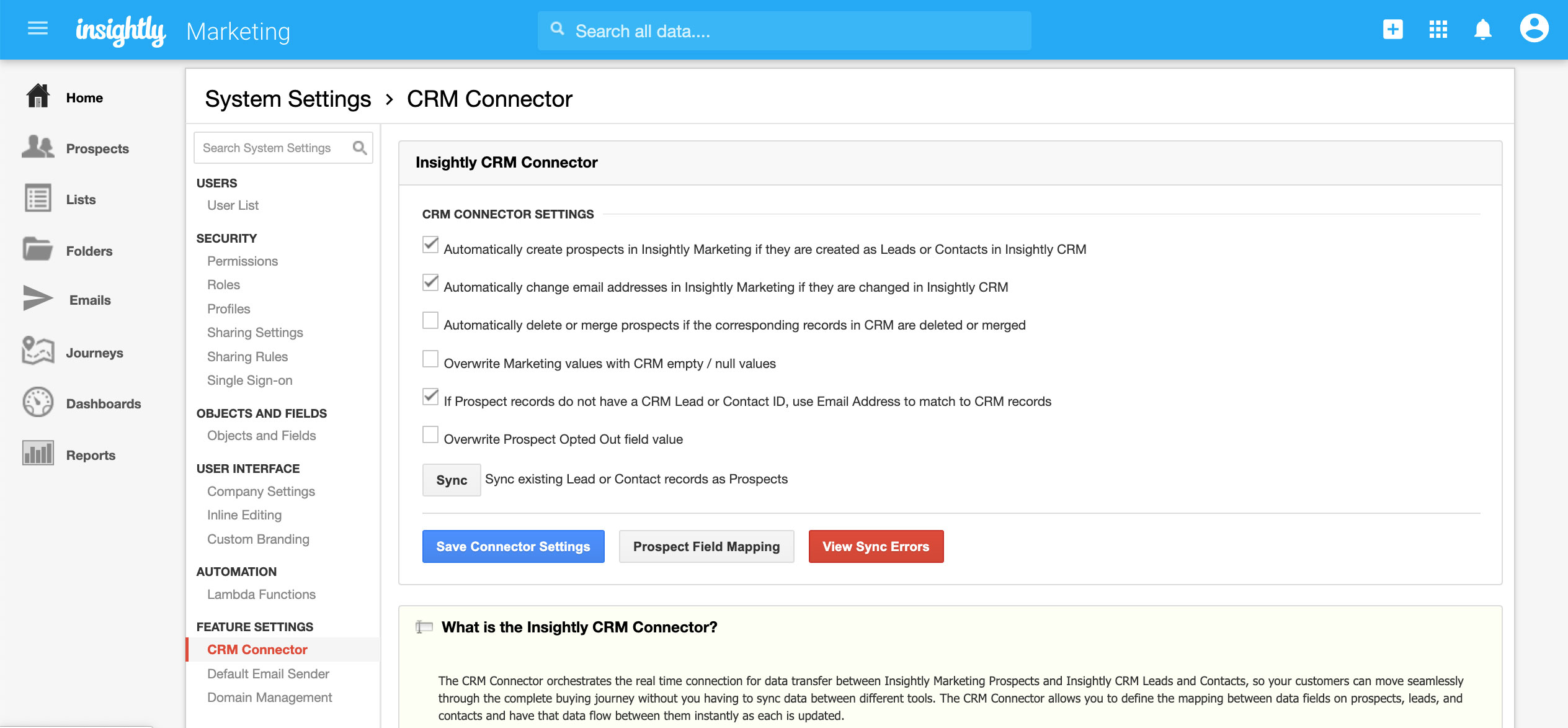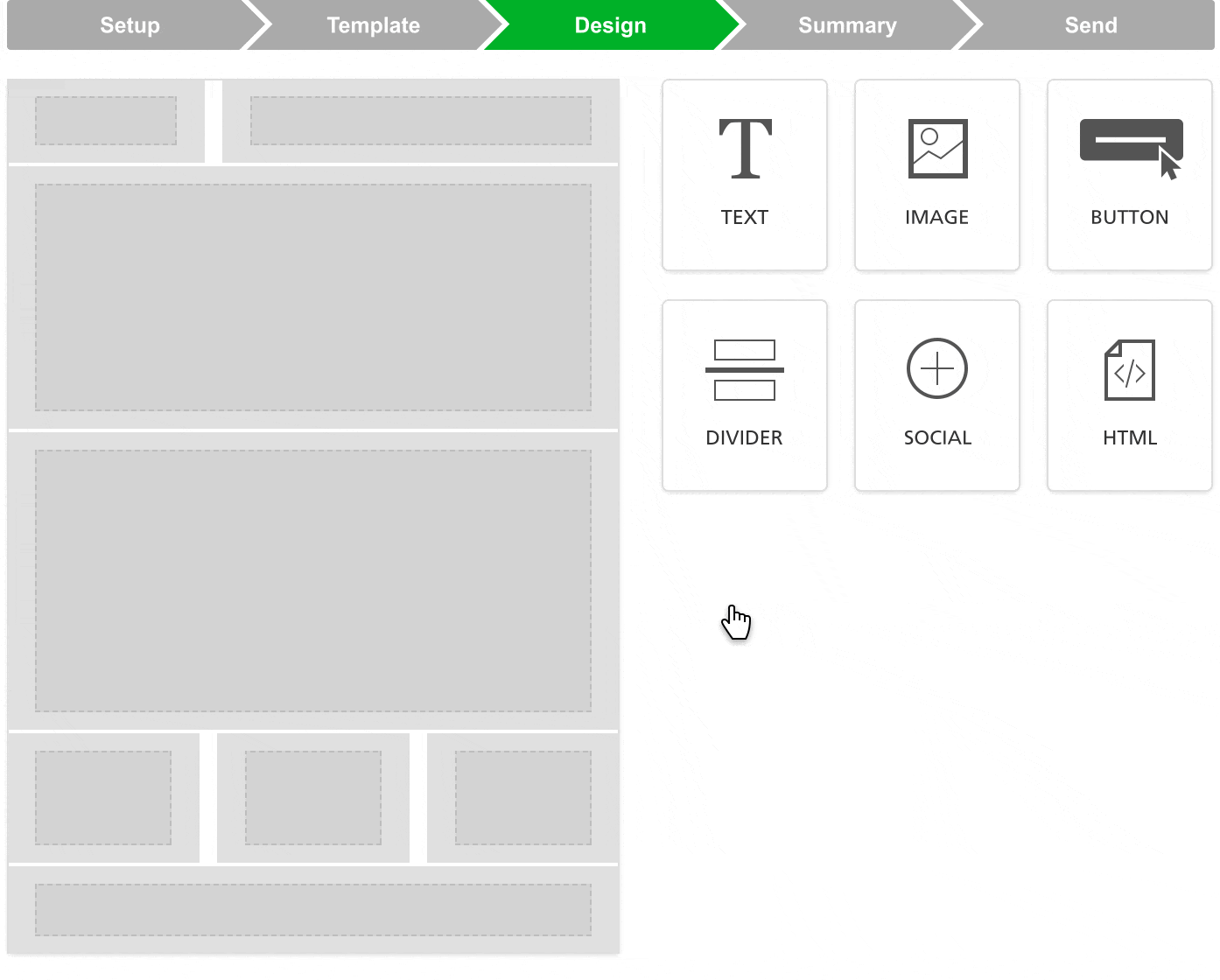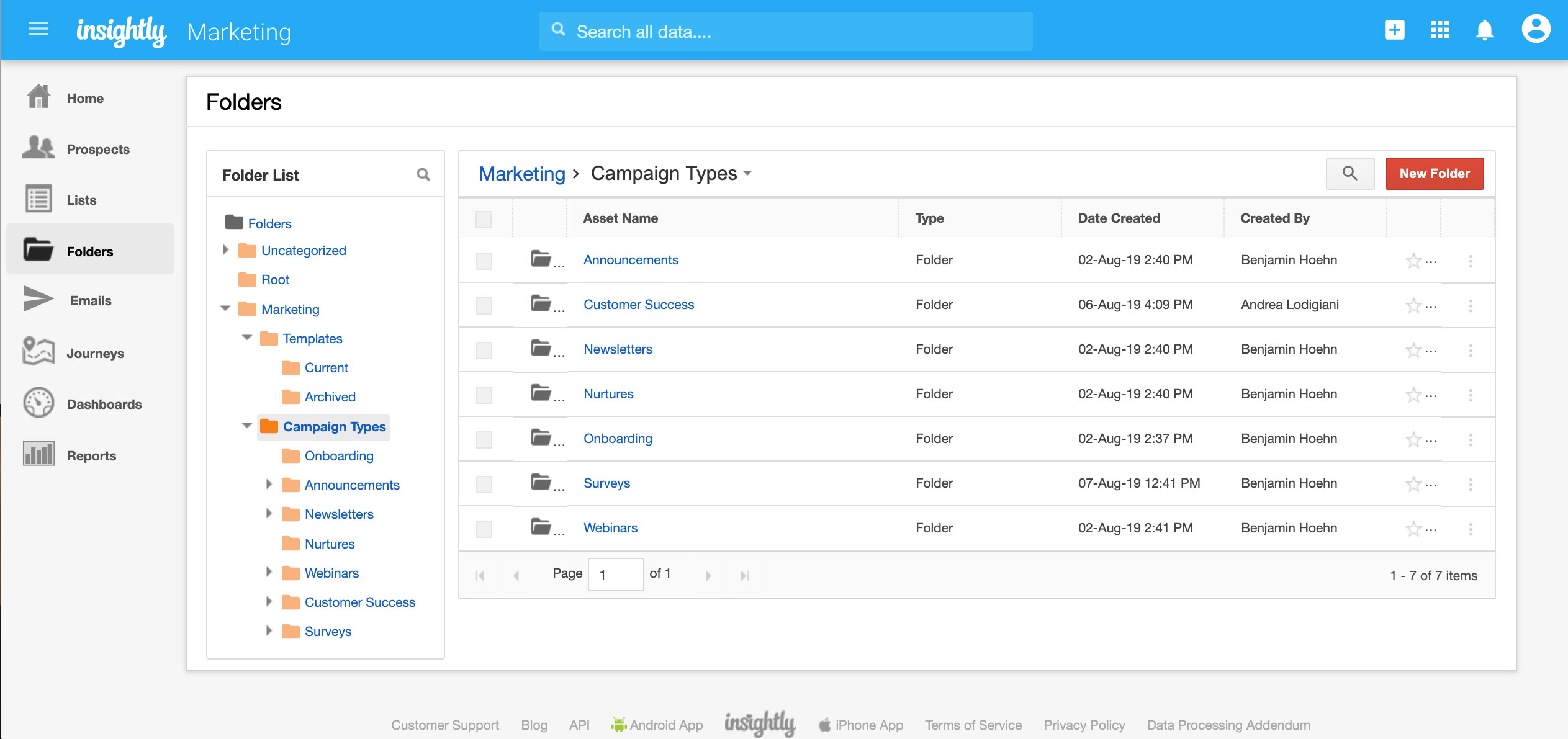Marketing
Insightly Marketing: From idea to product launch
A bit of background…
The story of Insightly Marketing begins with Insightly’s original vision of empowering businesses of all sizes and industries to manage sales, marketing, delivery, and service on a single unified platform. The strongest driving force behind that vision has always been data integrity — a prerequisite for business success in today’s economy and the new digital age. By unifying sales, marketing, and delivery on a single data platform, we are eliminating the need and cost of constantly cleaning and syncing data between systems and teams. We are also erasing outdated boundaries between sales and marketing, allowing businesses to run coordinated campaigns, create consistent brand experiences at every customer touchpoint, and accurately measure and report on results. Learn more about the advantages of a unified platform.
Of course, in order to realize any vision, you need a set of beliefs that help you to stay focused, overcome obstacles, and remind you of why you started the journey in the first place. Here are a few principles that guided our journey of building Insightly Marketing app:
- Level the playing field for businesses of all sizes and stages of development by opening access to enterprise-grade CRM technology that allows them to compete in the subscription economy where a company’s ability to collect, analyze, and act on customer data in a timely manner is crucial to business success.
- Simplify complex systems and processes to support and empower high-impact work and sound decision-making. Too many teams are distracted and held back, too many opportunities are missed as a result of using outdated, cumbersome, and/or deficient CRM technology.
- Design and build technology that humanizes data and allows businesses to focus on the relationship aspect of acquiring and retaining customers. Data is a foundational building block of customer relationships, but it can be overwhelming and useless without a proper structure and ability to take action. We help businesses to easily connect numerous data points to create a high definition picture of every customer and craft personalized messages and brand moments that strengthen their customer relationships and build trust.

Creation journey
The journey of building Insightly Marketing has been a journey of collaboration between product, engineering, and marketing teams, with our customers as a source of continuous inspiration and real-time feedback. From the ideation throughout the build and user testing, our product and marketing teams worked closely on every feature, sharing insights and challenging us to build the simplest and easiest to use solutions for marketers of all skill and experience levels.
As our own first customer, we got to test firsthand the transition from Marketo to Insightly Marketing and put it through its paces across four key marketing automation functions: prospect segmentation, email campaign creation, customer journey mapping, and analytics. We are excited to share a few details and lessons learned from our journey. We hope you’ll find the information and insights useful as you revisit your current marketing automation technology and/or consider implementing Insightly Marketing.
1. Challenging the status quo
Marketing automation is an aspect of customer relationship management (CRM) that’s concerned with prospect definitions, segmentation, and marketing campaign execution and tracking throughout the entire customer journey. With marketing automation, teams are able to perform key marketing functions in a more efficient and accurate manner at scale and measure performance. There are a number of ways to evaluate and compare different marketing automation technologies, but at the end it comes down to your marketing goals, priorities, and available resources.
Being strategic about your marketing tech investments will not only help you reap higher ROI, but will also help you to pursue new opportunities as your business scales.
With that in mind, we reviewed our Marketo instance and evaluated the platform in light of our business and marketing goals. We narrowed down our expectations from a marketing automation platform to this list:
- Generate more leads with the same budget
- Help sales build more and better pipeline
- Empower marketers to easily build campaigns, without outside help
- Gain visibility into the entire customer journey
- Manage the lead funnel more effectively
- Integrate sales and marketing to share a single source of truth on customer data
- Calculate ROI and prove the value of marketing efforts and spend
Marketo is a complex and sophisticated platform, but despite our best efforts, which included hiring a dedicated Marketo specialist and setting up regular data syncs with Insightly CRM, we constantly grappled with lead and customer data integration between sales and marketing. It took hours every week to complete data admin work, which included manual export and import, duplicate suppression, data cleanup, syncing fields, etc. We even hired an external agency whose sole job was to manage our email campaigns in Marketo. We sent them content, design assets, and campaign details and hoped it would all turn out as planned. The lack of full visibility and control over our campaigns hindered our ability to quickly set up and run multiple campaigns, test ideas, and make any last-minute necessary changes in real time. And, yet, working with an agency that specializes in Marketo was still easier than grappling with the system’s cumbersome setup on our own.
We found that Marketo’s interface made it hard to get employees to fully adopt the system and make the most out of it. For example, it took numerous clicks to view key information, such as creative assets and content, nurture configuration, and program performance reports.
With Marketo, we experienced firsthand the shortcomings of a marketing automation system that came with a lot of bells and whistles, yet failed to meet our most basic needs on a daily basis. In the meantime, the costs of using the platform kept rising without providing more value.
When Insightly engineers began to build Insightly Marketing, we were more than ready for the change and took key learning from that experience into designing a simpler, more intuitive, and scalable marketing automation solution for ourselves and other businesses. (You can say it was easier to build a whole new marketing automation app than to continue using Marketo.)

2. Creating our vision of marketing automation
As we thought about our marketing and business needs, we wanted to make sure that our marketing automation system would:
- Easily sync with the CRM in real-time, removing the need for manual data integration. Instead of spending hours to set up a single campaign, we’d have an automatic flow of information into that CRM that just worked.
- Serve as a single source of truth on customer data, including activities that led to sales conversion, and allow marketing and sales teams to create triggered, always-on campaigns to nurture our prospects into leads and nurture our customers into repeat customers and brand advocates.
- Help us track all our efforts by individual campaigns, so we’d able to optimize each one and increase conversion rates at different stages of customer journeys.
- Allow us to easily build dynamic lists that would automatically segment prospects and customers, so that we could reach them with timely and relevant messaging.
- Allow us to easily create drag-and-drop email campaigns with beautiful templates.
- Have a simple clean look and feel, allowing users to easily access necessary information, collaborate on projects, and reinforce best practices for marketing campaign management.
3. Turning our vision into reality
As we set out to turn our grand vision of an ideal marketing automation system into reality, we had to prioritize. We started exactly where we always do — customers and customer data, a foundational building block for any business. We wanted our marketing automation app to first and foremost accomplish two things:
1. Integrate with a CRM to create a high definition picture of every customer with full visibility throughout the entire customer journey, and
2. Allow businesses to use the data to create customer segments and quickly and easily carry out targeted marketing campaigns. Knowledge meets action, at scale.
From a technical perspective, we already had the foundational data architecture in place. We just had to build the marketing automation app on top of the platform that hosts our CRM, connecting sales and marketing at last. With a unified platform we’d be ensuring continuity at every level — from data structures to system integrations to user interface. We’d be able to link different types of customer data (profile and actions) in a clear and meaningful way to better understand our prospects and customers and reach them with targeted sales and marketing campaigns. We’d also be able to augment existing customer data with additional data from around the business and link relevant records in just a few clicks to gain visibility into every customer touchpoint.
With our framework and concept defined, we mapped the first set of functions for the initial release:
- Prospect segmentation and list creation
- A very easy to use email designer with great templates
- A visual customer journey builder
- Amazing analytics dashboards
- Advanced custom reporting
We also reviewed the top email campaign use cases:
- Batch and blast (announcements, newsletters, one-off communications, etc.)
- Simple nurture (follow-up after content download, blog subscription, event registration, or other top of funnel conversions)
- Conditional nurture (reengagement campaigns, custom follow-up triggered by certain actions/conditions)

4. Becoming our own first customer
As magical as it was to watch random (to an unaware eye) sketches from dry erase boards turn into clickable prototypes and, ultimately, into product features, we stayed critical throughout the entire process, testing and tweaking in real time. Here are a few key steps we took as we were building and later implementing Insightly Marketing.
Definitions
We debated naming conventions and meanings. What is a prospect? What is a lead? From our previous experiences we knew that these seemingly obvious definitions are often misunderstood or mean different things to sales vs marketing teams, and as a consequence create confusion and misalignment. So, we approached these definitions with great care and consideration, to make sure all data got accurately mapped between a CRM and Insightly Marketing and all records got properly organized and linked. Learn more here.

Data clean-up & migration
Before migrating to Insightly Marketing, we reviewed all our data in Marketo. We reviewed campaigns, programs, and performance reports, created catalogues of all landing pages and forms, and cleaned lists before exporting. As computer scientists and data analysts like to remind us — “garbage in, garbage out.” We got rid of garbage. Find more information on connecting Insightly CRM and Marketing data here.

Campaigns
As our own first customer, we got a chance to use the app to build and run real-life campaigns, including a monthly newsletter, a couple of webinar campaigns, and a conditional nurture campaign to revive inactive leads.
We then determined the types of email templates we’d need to create different campaigns. Here are a few template examples:
- Monthly newsletter
- Announcement
- Nurture email
- Event/webinar
After we sent out our very first email from our beta of Insightly Marketing, we learned that the “unsubscribe” function didn’t perform exactly as intended. Our engineers had to quickly fix the issue, so we could run our next email campaign. We then added a quick guide and tips on creating an “unsubscribe” link in an email template.
Anyone who has ever managed email campaigns knows how many things can go wrong. We’re acutely aware of this at Insightly, and as our engineers continue to innovate and simplify the complex world of marketing automation, we use real-time feedback and testing to keep up the quality of our solutions and give our customers peace of mind as they manage their own marketing campaigns and outreach.
To learn more on building email campaigns, check out this section in our Help Center.

User management
One of our favorite moments while implementing Insightly Marketing was when for the first time ever everyone on our marketing team could easily access and use a marketing system. Our designers could now create and test email templates right in the app, instead of having to build mockups or submit specs to a third party, and our writers could easily add and edit the content on their own. This eliminated a lot of back-and-forth (online and offline) and duplicate efforts, and also provided individual team members with visibility into marketing campaigns from start to finish.
While a rapid team-wide adoption was exciting, it also reminded us of the need to properly set up and manage users and user permissions. To that end, we identified “administrators” with advanced permissions and regular users with limited/simple permissions and designed simple processes and folder structures.

Folder management
Considering how many content assets we create, store, and use, Insightly Marketing’s Folders feature became an invaluable tool for keeping our content organized and easily searchable and accessible. We developed a simple and consistent naming convention for all our files and folders and organized them in a way that made sense to the team.

Measuring performance
In order to ensure that Insightly Marketing wasn’t just easy to use, but also helped us to significantly improve campaign performance, we established key performance indicators (KPIs) — open rates, click through rates, bounce rates, registration rates — and benchmarks for each KPI. This required massive reporting data exports from Marketo and analysis of recent historical KPIs by email category.
First, the data had to be formatted, cleaned, and categorized by top level category, such as Webinar, Announcement, etc. We then categorized it by sub-category: Invite 1, Follow-Up, Confirmation. Next, we collated the data and established averages for each specific sub-category. Based on that analysis we determined our baseline goals for email open rates, click through rates, sign-ups, and so on, which we’d use to evaluate every email campaign performance.
Once we configured some campaigns in Insightly Marketing and reached and exceeded our baseline goals, we started to trust our tool to send more emails.
We’re now regularly reviewing KPIs for each email or customer journey send, comparing the results to the original benchmarks. This measurement became valuable product feedback for the development team and continues to inform the build-out of the future reporting and dashboards.
Our journey of building Insightly Marketing doesn’t end here. Our engineering team delivers new product features and improvements every two weeks. Stay tuned for more updates on Insightly Marketing.
***
At the end of the day, marketing automation should solve for three key needs: planning, execution, and reporting of marketing campaigns. In today’s economy — with an abundance of information and options and multi-path consumer behavior — it takes strategic thinking, an ability to analyze a lot of data, and creativity to acquire and engage today’s customers.
With this in mind, a unified CRM for sales and marketing is the most effective way to ensure customer data integrity, foster team alignment, and achieve high ROI on marketing spend. We believe that investing in a unified CRM platform for sales, marketing, and delivery is the single fastest and most effective way to cut overhead costs and make the most out of every marketing dollar spent. We also believe that it takes a shared vision among stakeholders, true collaboration, and a solid strategy to effectively implement marketing automation.
We invite you to browse documentation, guides, and best practices on how to properly set up and start using Insightly Marketing. For more information, please check the Help Center, where we regularly add new content on all our products and best practices.
Are you ready to start your own journey with Insightly Marketing? Learn more in Marketing Automation Made Simple, and when you’re ready, let’s talk!